
San Pedro Sula: The Vibrant Heart of Honduras
Discover San Pedro Sula: Honduras' vibrant industrial hub offering a mix of modernity, rich culture, natural beauty, delicious cuisine, and lively nightlife.
San Pedro Sula, known as the industrial capital of Honduras, offers a unique blend of modernity and tradition. As the second-largest city in the country, it boasts a thriving economy, a bustling nightlife, and a rich cultural heritage. The city's backdrop is adorned with lush mountains and verdant landscapes, providing a picturesque setting for visitors. San Pedro Sula is a gateway to numerous natural wonders and historical sites. The nearby Cusuco National Park is a haven for nature enthusiasts, with its diverse flora and fauna. For those interested in history, the Museo de Antropología e Historia offers a deep dive into the region's past, showcasing artifacts and exhibits that date back centuries. The city's culinary scene is another highlight, with a variety of local and international cuisines to savor. From street food stalls to high-end restaurants, there's something for every palate. Don't miss the opportunity to try traditional Honduran dishes, such as baleadas and pastelitos, which are sure to delight your taste buds. Shopping in San Pedro Sula is an experience in itself. The city is home to numerous markets and malls where you can find everything from handmade crafts to luxury goods. The Mercado Guamilito is particularly popular among tourists for its wide array of souvenirs and local products. San Pedro Sula's vibrant nightlife offers a range of options, from lively bars and clubs to more relaxed lounges and cafes. Whether you're looking to dance the night away or enjoy a quiet drink, the city has something to offer everyone. The friendly locals and the lively atmosphere make every night out a memorable experience.
Local tips in San Pedro Sula
- Visit the Mercado Guamilito for authentic souvenirs and local crafts.
- Try local dishes like baleadas and pastelitos at street food stalls.
- Plan a day trip to Cusuco National Park for hiking and wildlife spotting.
- Explore the Museo de Antropología e Historia to learn about the region's history.
- Stay aware of your surroundings and avoid walking alone at night for safety.
San Pedro Sula: The Vibrant Heart of Honduras
San Pedro Sula, known as the industrial capital of Honduras, offers a unique blend of modernity and tradition. As the second-largest city in the country, it boasts a thriving economy, a bustling nightlife, and a rich cultural heritage. The city's backdrop is adorned with lush mountains and verdant landscapes, providing a picturesque setting for visitors. San Pedro Sula is a gateway to numerous natural wonders and historical sites. The nearby Cusuco National Park is a haven for nature enthusiasts, with its diverse flora and fauna. For those interested in history, the Museo de Antropología e Historia offers a deep dive into the region's past, showcasing artifacts and exhibits that date back centuries. The city's culinary scene is another highlight, with a variety of local and international cuisines to savor. From street food stalls to high-end restaurants, there's something for every palate. Don't miss the opportunity to try traditional Honduran dishes, such as baleadas and pastelitos, which are sure to delight your taste buds. Shopping in San Pedro Sula is an experience in itself. The city is home to numerous markets and malls where you can find everything from handmade crafts to luxury goods. The Mercado Guamilito is particularly popular among tourists for its wide array of souvenirs and local products. San Pedro Sula's vibrant nightlife offers a range of options, from lively bars and clubs to more relaxed lounges and cafes. Whether you're looking to dance the night away or enjoy a quiet drink, the city has something to offer everyone. The friendly locals and the lively atmosphere make every night out a memorable experience.
When is the best time to go to San Pedro Sula?
Iconic landmarks you can’t miss
San Pedro Sula Central Park
Discover the lush landscapes and vibrant culture of San Pedro Sula Central Park, the city's favorite urban oasis for relaxation and community events.
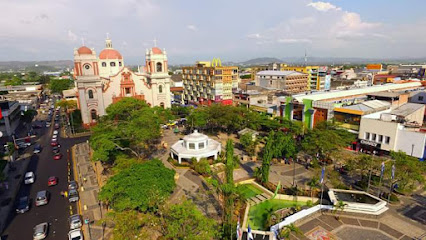
AEROPUERTO INTERNACIONAL RAMÓN VILLEDA MORALES, SAN PEDRO SULA
Discover the heart of Honduras at Ramón Villeda Morales International Airport, your gateway to adventure and cultural immersion in Central America.
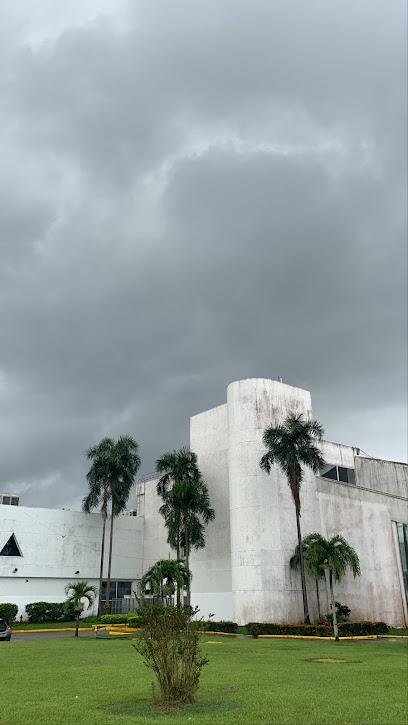
Museo de Antropologia e Historia
Explore the rich cultural heritage of Honduras at Museo de Antropología e Historia, a captivating journey through the nation's history and indigenous cultures.
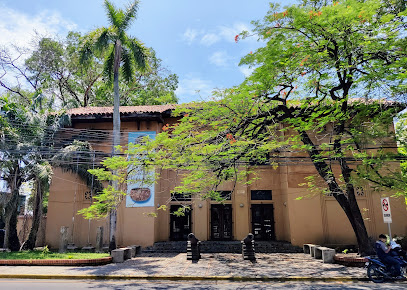
St. Peter the Apostle Metropolitan Cathedral Cathedral, San Pedro Sula
Explore the breathtaking St. Peter the Apostle Metropolitan Cathedral, an architectural marvel and spiritual haven in San Pedro Sula, Honduras.
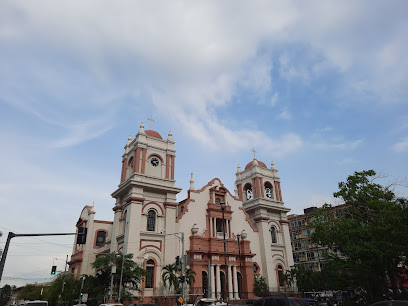
Presentación Centeno Children's Park
Explore the lush landscapes and playful atmosphere of Presentación Centeno Children's Park, a must-visit state park in San Pedro Sula for family fun and relaxation.
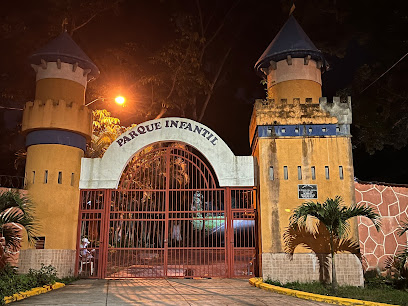
Cusuco National Park
Immerse yourself in nature at Cusuco National Park, a breathtaking national park in Honduras known for its stunning landscapes and rich biodiversity.
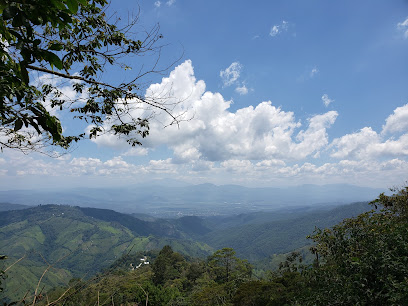
Plaza de las Banderas
Explore the vibrant cultural heart of San Pedro Sula at Plaza de las Banderas, a gathering place rich in art, heritage, and local festivities.
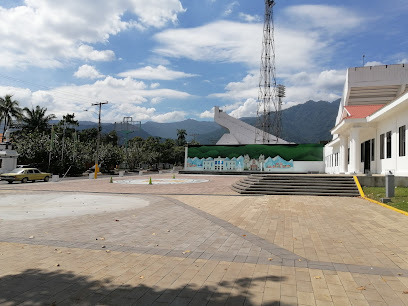
Centro Cultural Sampedrano
Experience the vibrant cultural scene at Centro Cultural Sampedrano, where art meets education in San Pedro Sula, Honduras.
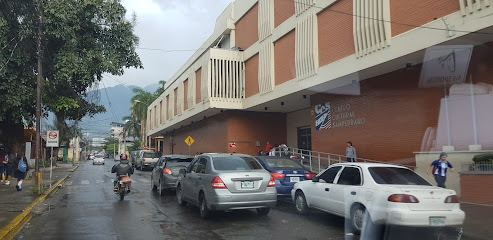
Hacienda Tara
Experience elegance and tranquility at Hacienda Tara, the premier event venue in San Pedro Sula, perfect for weddings and celebrations amidst stunning landscapes.
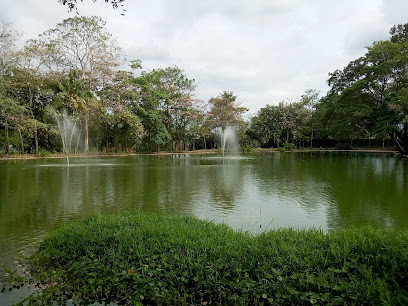
San Pedro Sula Honduras Temple
Discover the spiritual serenity of the San Pedro Sula Honduras Temple, a stunning architectural marvel and peaceful retreat in the heart of San Pedro Sula, Honduras.
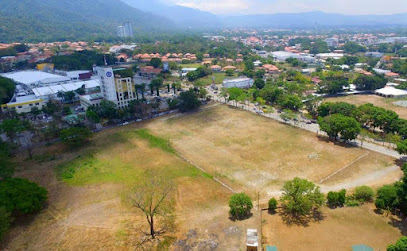
Casa de la Cultura
Explore the vibrant culture and history of Honduras at Casa de la Cultura, a must-see museum in San Pedro Sula for every traveler.
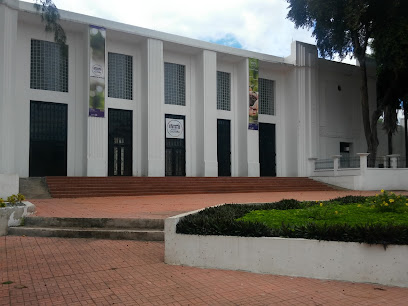
Plaza Mundialista
Discover the heartbeat of San Pedro Sula at Plaza Mundialista, a historic landmark celebrating culture and community.
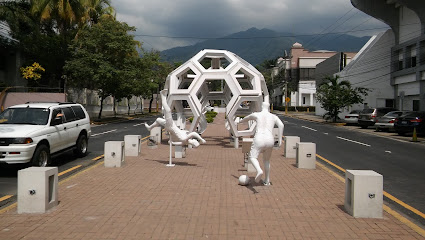
MONUMENTO A LA MADRE, SAN PEDRO SULA HONDURAS
Explore the Monumento a la Madre in San Pedro Sula, a stunning tribute to motherhood set in a serene park, perfect for relaxation and cultural immersion.

LOS MANGALES
Explore the historical landmark of Los Mangales in San Pedro Sula, a rich tapestry of culture and architecture reflecting Honduras's fascinating heritage.

Grupolaspalmas
Discover the historical charm of Grupolaspalmas, a stunning castle in San Pedro Sula, where history and stunning architecture come alive.
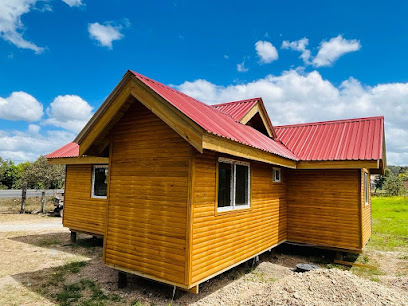
Unmissable attractions to see
San Pedro Sula Central Park
Discover the vibrant heart of San Pedro Sula at Central Park, a serene escape filled with greenery, local culture, and delightful eateries.
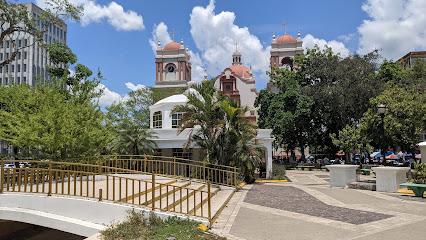
Rotulo Coca-cola
Discover the best cycling trails and vibrant community at Rotulo Coca-Cola in the stunning Cordillera Del El Merendon, San Pedro Sula.
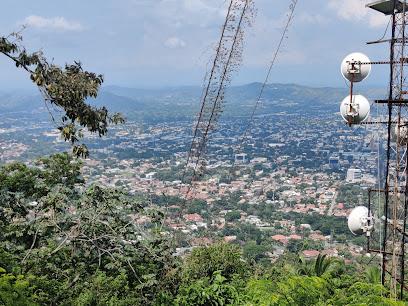
General Francisco Morazán Stadium
Experience the vibrant sports culture of San Pedro Sula at General Francisco Morazán Stadium, the largest and most iconic stadium in Honduras.
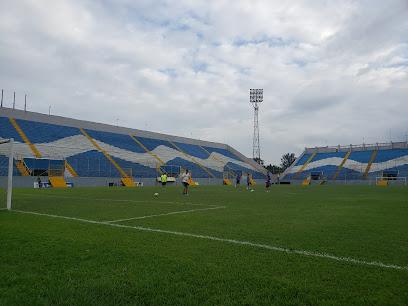
St. Peter the Apostle Metropolitan Cathedral Cathedral, San Pedro Sula
Explore the stunning St. Peter the Apostle Metropolitan Cathedral, a must-visit architectural gem and spiritual haven in the heart of San Pedro Sula.
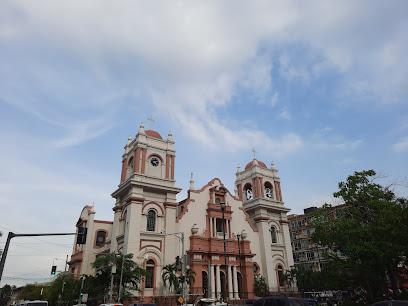
Cusuco National Park
Explore the breathtaking landscapes and rich biodiversity of Cusuco National Park, a must-visit destination for nature lovers in Honduras.
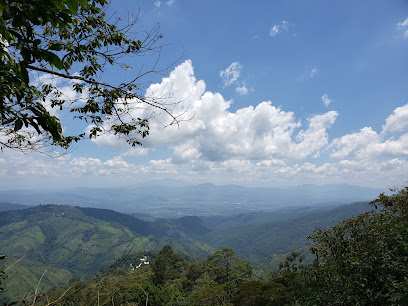
Plaza de las Banderas
Experience the vibrant culture of San Pedro Sula at Plaza de las Banderas, a picturesque hub filled with art, flags, and local celebrations.
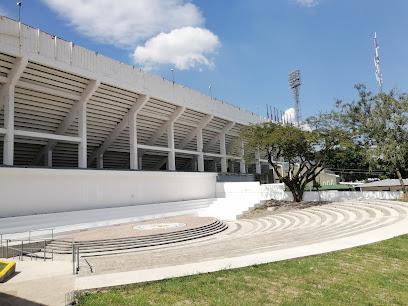
Reserva Municipal Merendon
Immerse yourself in nature at Reserva Municipal Merendon, a stunning national forest in Honduras, perfect for hiking and wildlife watching.
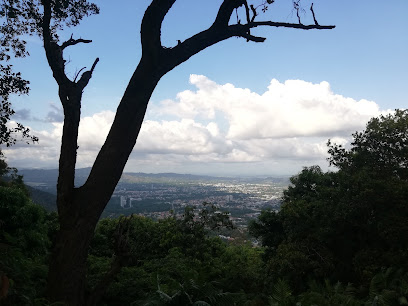
Casa de la Cultura
Explore the artistic heritage of Honduras at Casa de la Cultura, a cultural gem in San Pedro Sula showcasing local art and history.
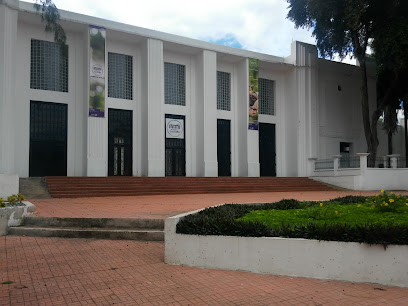
El Tractor Que Revolucionó Honduras
Discover the agricultural heritage of Honduras at El Tractor Que Revolucionó, a unique tourist attraction in San Pedro Sula highlighting the evolution of farming.
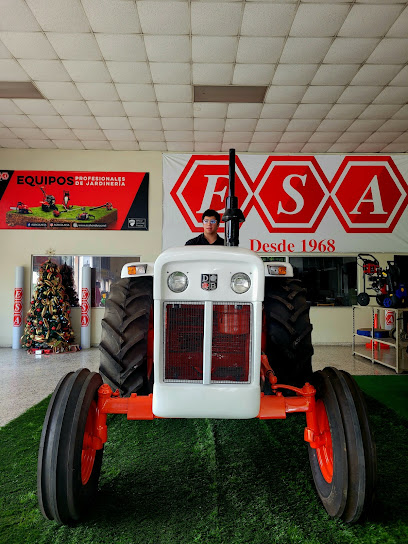
San lucidro
Experience the cultural richness and natural beauty of San Lucidro, a captivating tourist attraction in the heart of San Pedro Sula, Honduras.

Essential places to dine
Angeli Gardens
Experience the exquisite flavors of Honduras at Angeli Gardens, where lush surroundings meet culinary artistry in San Pedro Sula.
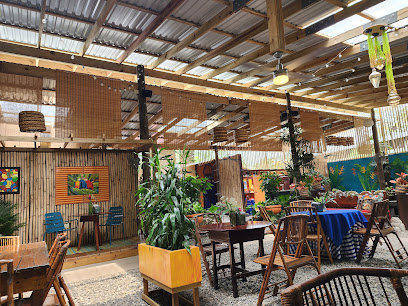
Chedrani Restaurant
Experience authentic Honduran cuisine at Chedrani Restaurant in San Pedro Sula, where every dish tells a story.
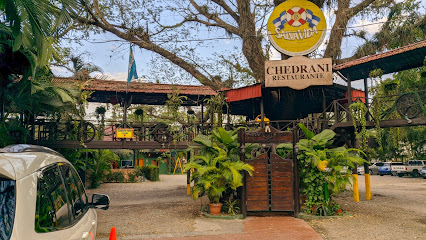
Arnie's
Discover Arnie's in San Pedro Sula - where local flavors meet international cuisine in a vibrant setting perfect for all occasions.
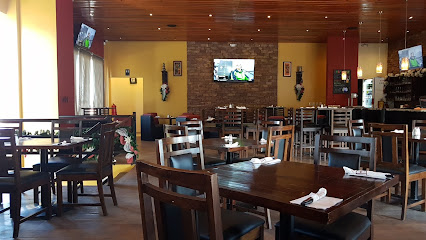
El Costillal Grill
Discover the vibrant flavors of Honduras at El Costillal Grill in San Pedro Sula - where culinary excellence meets warm hospitality.
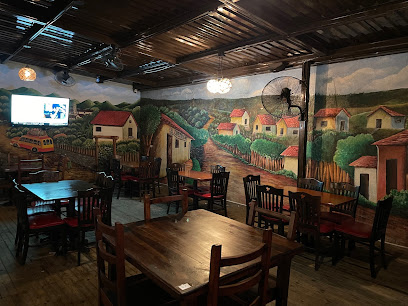
El Portal de Las Carnes
Experience authentic Honduran cuisine at El Portal de Las Carnes in San Pedro Sula – where every bite tells a story.
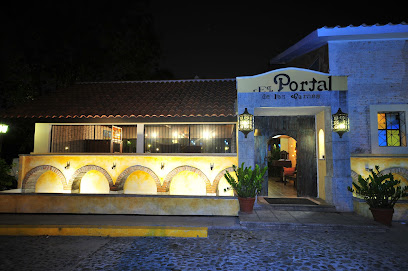
Restaurante El Manzano
Discover authentic Honduran flavors at Restaurante El Manzano in San Pedro Sula – where every dish tells a story.
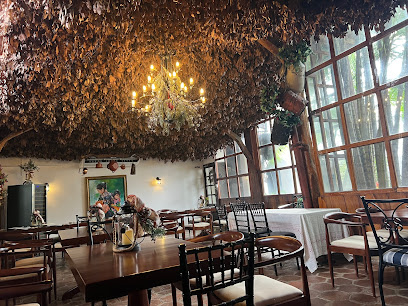
La Casca Cuisine & Grill
Experience exquisite dining at La Casca Cuisine & Grill in San Pedro Sula - where local flavors meet international cuisine.
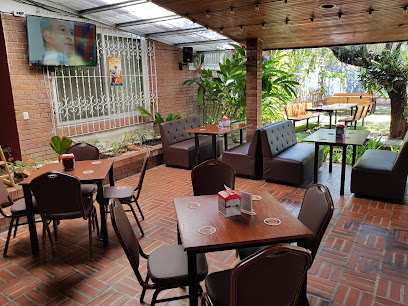
La Carbonera
Discover the flavors of Honduras at La Carbonera, where traditional cuisine meets warm hospitality in San Pedro Sula.
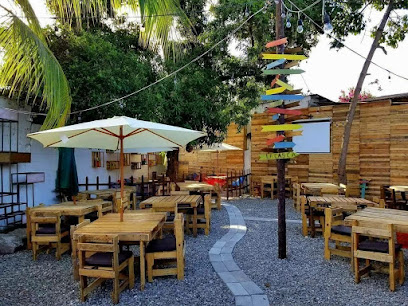
Restaurante La Estancia Parrillada Uruguaya
Savor authentic Uruguayan cuisine at Restaurante La Estancia Parrillada Uruguaya in San Pedro Sula—an unforgettable culinary journey awaits.
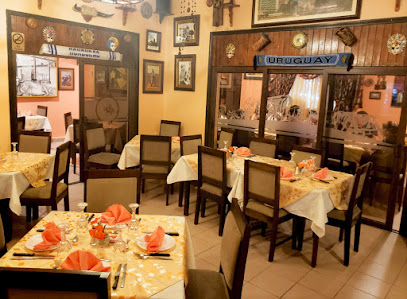
Restaurante Lindamar
Experience authentic Honduran seafood at Restaurante Lindamar in San Pedro Sula - a perfect blend of tradition and taste.
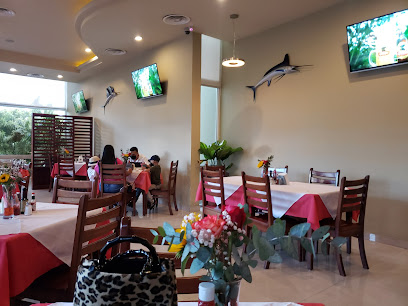
T.G.I. Friday's
Savor American cuisine at T.G.I. Friday's in San Pedro Sula - where great food meets lively atmosphere.

Restaurante Casas Viejas
Discover authentic Honduran cuisine at Restaurante Casas Viejas in San Pedro Sula, where every dish tells a story.
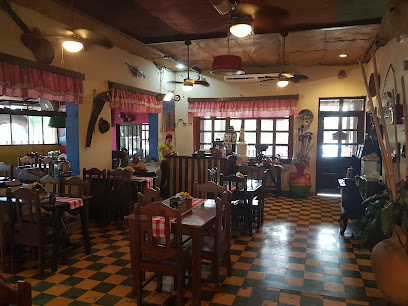
Restaurante Tipicos las Carnitas
Experience authentic Honduran cuisine at Restaurante Tipicos las Carnitas in San Pedro Sula – where every bite tells a story.
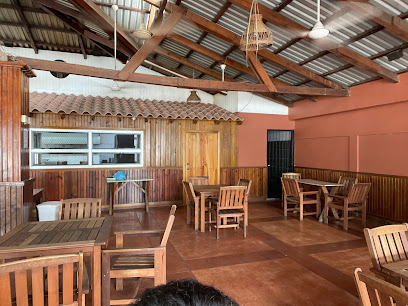
Restaurante FUM YIM
Experience the rich flavors of Honduras at Restaurante FUM YIM - a culinary gem in San Pedro Sula offering delicious local and international dishes.
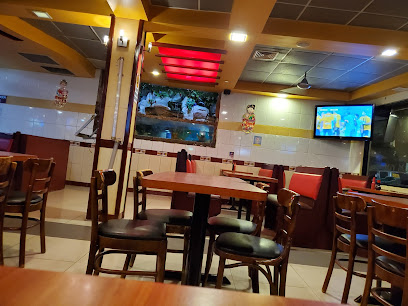
Senderos PlayLand
Experience delightful dining at Senderos PlayLand - where delicious food meets vibrant fun in San Pedro Sula.
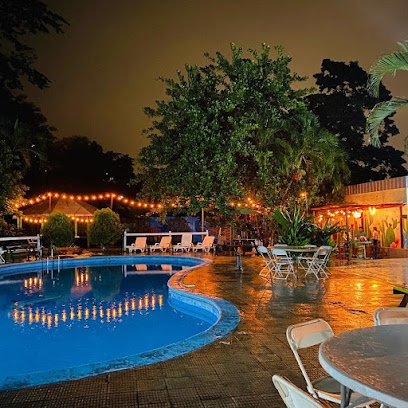
Markets, malls and hidden boutiques
CityMall San Pedro Sula
Explore CityMall San Pedro Sula, a vibrant shopping haven featuring diverse stores, delightful dining, and fun entertainment for an unforgettable experience.
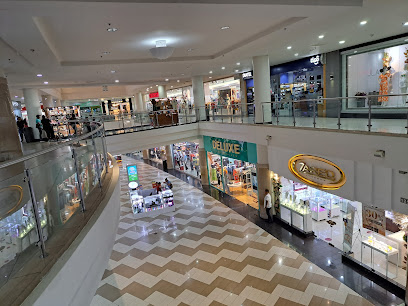
Mall Pasaje Valle
Explore the shopping and dining delights at Mall Pasaje Valle, a vibrant hub in San Pedro Sula offering a unique local experience.
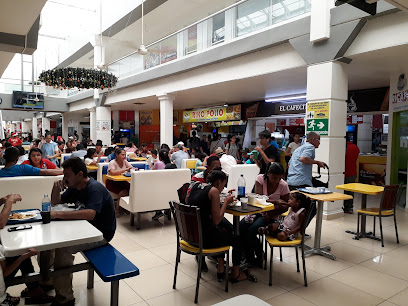
Glodisa | Diunsa San Fernando
Explore Glodisa, a charming gift shop in San Pedro Sula offering unique souvenirs and local crafts that capture the essence of Honduras.

Luz´s Store #5
Discover unique fashion and local craftsmanship at Luz’s Store #5, a must-visit clothing store in San Pedro Sula, Honduras.
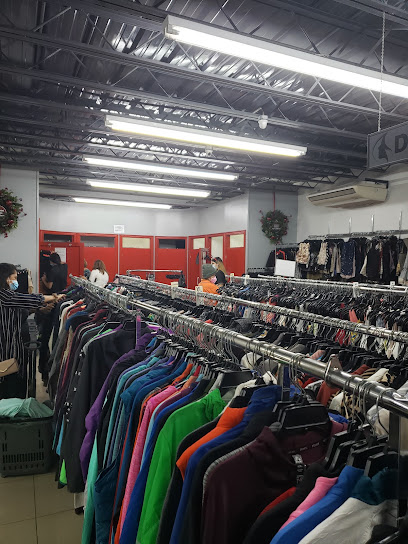
Zara
Discover the latest fashion trends in San Pedro Sula at Zara, a stylish clothing store located in the bustling City Mall.

Karla's Store
Explore the vibrant styles of Honduras at Karla's Store, a boutique in San Pedro Sula offering unique clothing and accessories.

G&G Store
Discover the vibrant shopping experience at G&G Store in San Pedro Sula, where local culture meets international brands.
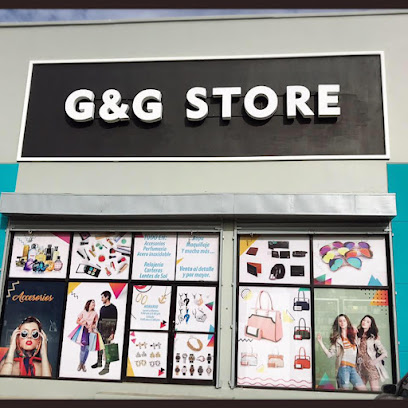
Xiomaras Fashion
Discover the vibrant styles of Xiomaras Fashion in San Pedro Sula, where local craftsmanship meets contemporary trends in clothing.
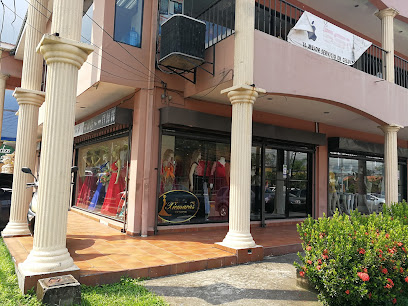
Tienda Malú
Explore Tienda Malú in San Pedro Sula for trendy clothing and accessories that reflect local style and fashion trends. Discover your unique look today!
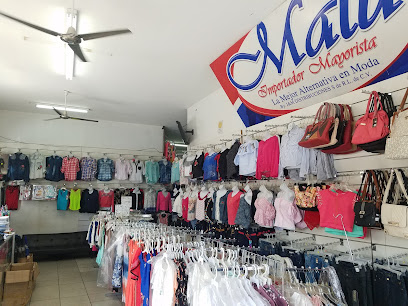
Extravaganza Boutique Hn
Discover the latest trends in women's fashion at Extravaganza Boutique Hn, a stylish clothing store in San Pedro Sula offering unique outfits and accessories.
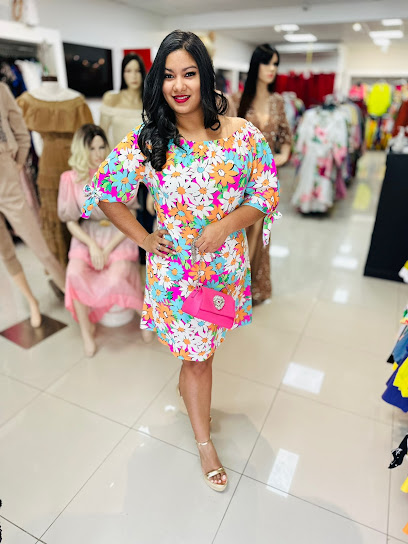
Fancy Boutique
Explore San Pedro Sula's premier destination for unique fashion with local and international styles at Fancy Boutique.
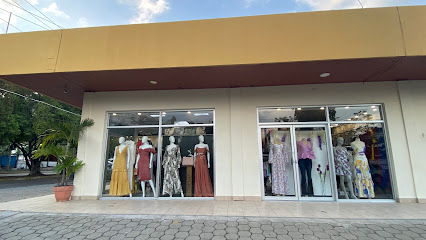
Angel's Store
Explore unique fashion at Angel's Store in San Pedro Sula, where local trends meet global style in a charming boutique setting.
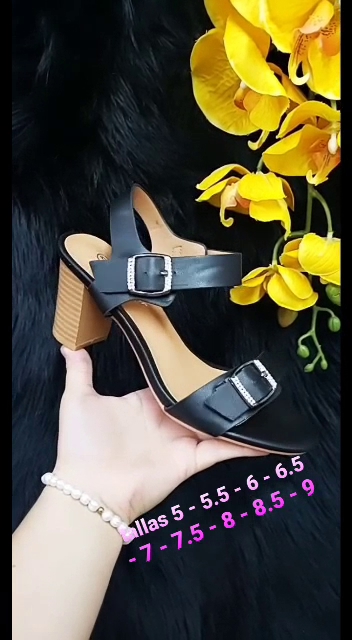
Tiendas Ivonne-El Amigo#1
Discover unique secondhand clothing at Tiendas Ivonne-El Amigo, the ultimate thrift store experience in San Pedro Sula, Honduras.

Banana Gift Shop
Explore unique Honduran crafts and souvenirs at Banana Gift Shop, where every item tells a story of local artistry and culture.
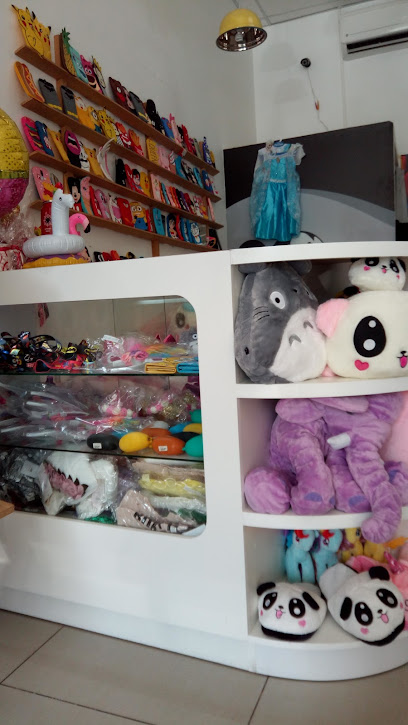
La Tienda de Todos
Explore unique finds at La Tienda de Todos, a delightful second-hand store in San Pedro Sula, offering vintage treasures and authentic local charm.
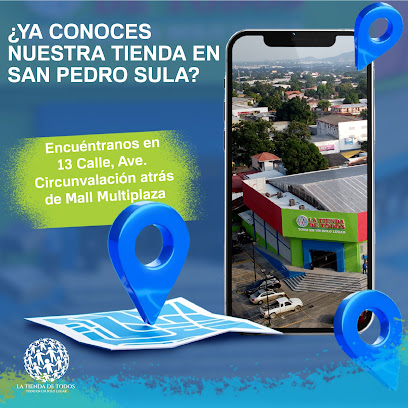
Essential bars & hidden hideouts
Morena
Discover the lively nightlife at Morena, a must-visit bar in San Pedro Sula, where great drinks and good vibes await you.
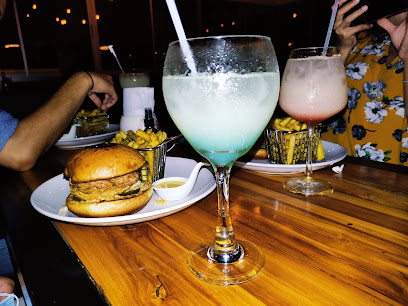
Angus Rocks Bar Restaurant Pub
Experience the best of local and international flavors at Angus Rocks Bar Restaurant Pub, a vibrant gastropub in San Pedro Sula.
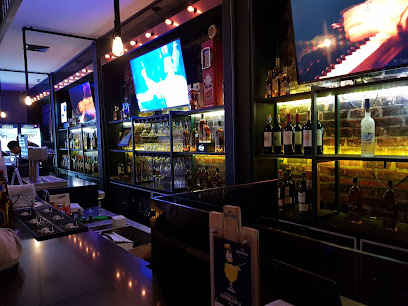
Zeppelin Bar
Discover the vibrant nightlife at Zeppelin Bar, a lively destination in San Pedro Sula offering delicious drinks and a welcoming atmosphere for tourists.
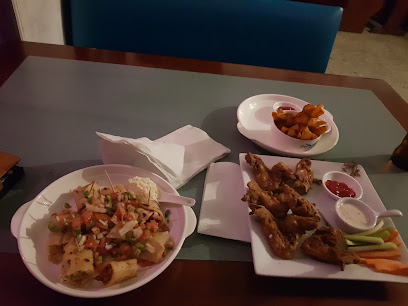
La Musa Gastropub
Discover the vibrant flavors of Honduras at La Musa Gastropub, a unique dining experience in San Pedro Sula blending local and international cuisines.
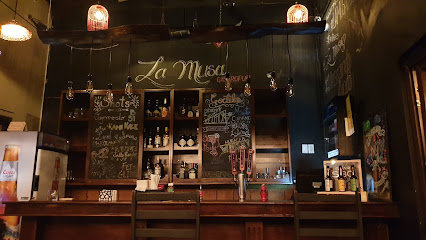
Sport Bar
Discover the lively Sport Bar in San Pedro Sula, where great food, drinks, and entertainment come together for an unforgettable experience.
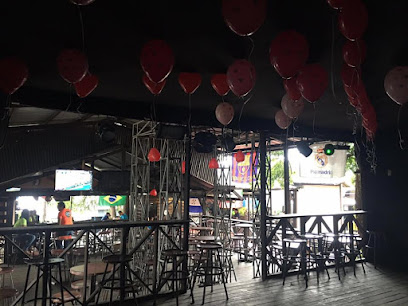
La Divina Comedia
Discover the lively atmosphere and exquisite drinks at La Divina Comedia, a premier bar in San Pedro Sula, perfect for nightlife enthusiasts.
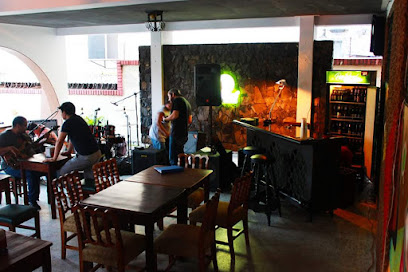
El Deck Sports Bar & Grill
Experience the thrill of live sports at El Deck Sports Bar & Grill, where delicious food meets an electrifying atmosphere in San Pedro Sula.
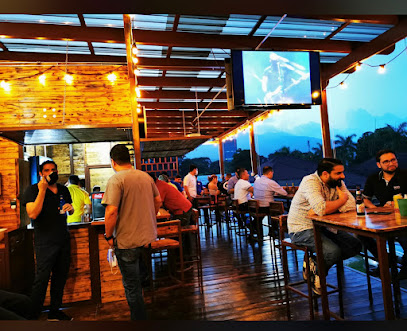
The Sunset Beergarden
Experience the vibrant atmosphere and sunset views at The Sunset Beergarden in San Pedro Sula, where great drinks meet lively entertainment.
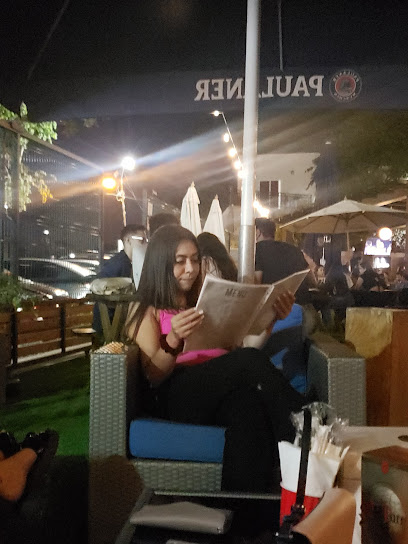
Stragos Bar BQ
Discover the vibrant flavors of San Pedro Sula at Stragos Bar BQ, a top destination for grill enthusiasts and social gatherings.
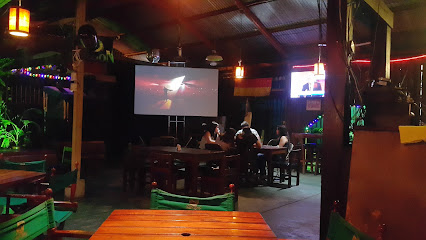
Jungla Pub
Experience the vibrant nightlife at Jungla Pub, where craft beers meet delicious cuisine in the heart of San Pedro Sula.
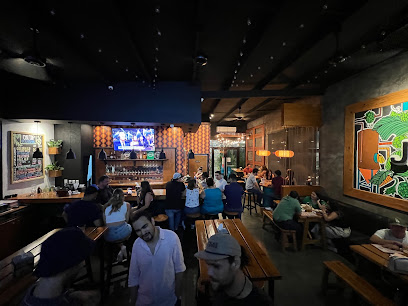
Bar y Restaurante El Rincón
Immerse yourself in the lively atmosphere of Bar y Restaurante El Rincón, a culinary gem in San Pedro Sula offering rich flavors and vibrant nightlife.
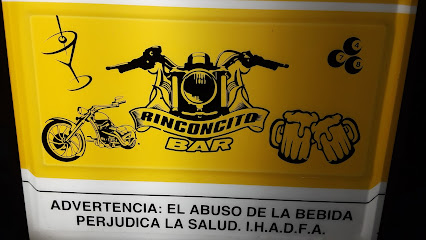
Las Perrys Bar
Experience the vibrant nightlife at Las Perrys Bar in San Pedro Sula, where friendly vibes, delicious drinks, and local culture await you.

2KE3 Bar
Discover the vibrant nightlife of San Pedro Sula at 2KE3 Bar, where great drinks and lively entertainment await.
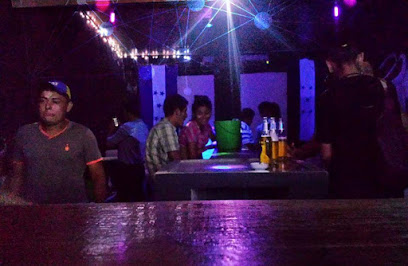
Picaritos Bar
Discover the vibrant atmosphere and local flavors at Picaritos Bar in San Pedro Sula, a must-visit destination for an authentic Honduran experience.
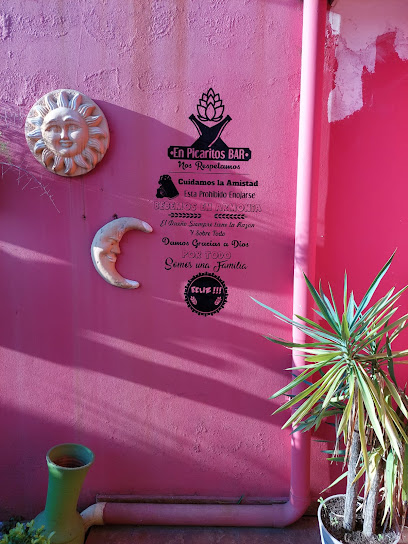
Popol Nah
Experience the vibrant nightlife of San Pedro Sula at Popol Nah, where great drinks and a lively atmosphere await.
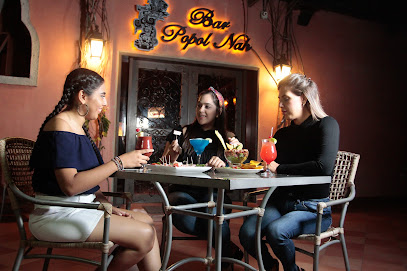
Local Phrases
-
- HelloHola
[oh-lah] - GoodbyeAdiós
[ah-dee-ohs] - YesSí
[see] - NoNo
[noh] - Please/You're welcomePor favor/De nada
[por fah-bor/deh nah-dah] - Thank youGracias
[grah-see-ahs] - Excuse me/SorryDisculpe/Lo siento
[dee-skool-peh/loh see-en-toh] - How are you?¿Cómo estás?
[koh-moh ehs-tahs] - Fine. And you?Bien. ¿Y tú?
[byen. ee too] - Do you speak English?¿Hablas inglés?
[ah-blahs een-glehs] - I don't understandNo entiendo
[noh ehn-tee-ehn-doh]
- HelloHola
-
- I'd like to see the menu, pleaseMe gustaría ver el menú, por favor
[meh goos-tah-ree-ah behr ehl meh-noo, poor fah-bor] - I don't eat meatNo como carne
[noh koh-moh kahr-neh] - Cheers!¡Salud!
[sah-loohd] - I would like to pay, pleaseMe gustaría pagar, por favor
[meh goos-tah-ree-ah pah-gahr, poor fah-bor]
- I'd like to see the menu, pleaseMe gustaría ver el menú, por favor
-
- Help!¡Ayuda!
[ah-yoo-dah] - Go away!¡Vete!
[veh-teh] - Call the Police!¡Llama a la Policía!
[yah-mah ah lah poh-lee-see-ah] - Call a doctor!¡Llama a un médico!
[yah-mah ah oon meh-dee-koh] - I'm lostEstoy perdido
[ehs-toy pehr-dee-doh] - I'm illEstoy enfermo
[ehs-toy ehn-fehr-moh]
- Help!¡Ayuda!
-
- I'd like to buy...Me gustaría comprar...
[meh goos-tah-ree-ah kohm-prahr] - I'm just lookingSolo estoy mirando
[soh-loh ehs-toy mee-rahn-doh] - How much is it?¿Cuánto cuesta?
[kwan-toh kwehs-tah] - That's too expensiveEso es muy caro
[eh-soh ehs moo-ee kahr-oh] - Can you lower the price?¿Puede bajar el precio?
[pweh-deh bah-har ehl pree-see-oh]
- I'd like to buy...Me gustaría comprar...
-
- What time is it?¿Qué hora es?
[keh oh-rah ehs] - It's one o'clockEs la una
[ehs lah oo-nah] - Half past (10)Las diez y media
[lahs dyehs ee-ehs ee meh-dee-ah] - MorningMañana
[mah-nyah-nah] - AfternoonTarde
[tahr-deh] - EveningNoche
[noh-cheh] - YesterdayAyer
[ah-yehr] - TodayHoy
[oy] - TomorrowMañana
[mah-nyah-nah] - 1Uno
[oo-noh] - 2Dos
[dohs] - 3Tres
[trehs] - 4Cuatro
[kwah-troh] - 5Cinco
[seen-koh] - 6Seis
[sehs] - 7Siete
[syeh-teh] - 8Ocho
[oh-choh] - 9Nueve
[nweh-veh] - 10Diez
[dyehs]
- What time is it?¿Qué hora es?
-
- Where's a/the...?¿Dónde está...?
[dohn-deh ehs-tah] - What's the address?¿Cuál es la dirección?
[kwal ehs lah dee-rehk-syohn] - Can you show me (on the map)?¿Puede mostrarme (en el mapa)?
[pweh-deh mohs-trar-meh (ehn ehl mah-pah)] - When's the next (bus)?¿Cuándo es el próximo (autobús)?
[kwan-doh ehs ehl proh-ksy-moh (ow-toh-boos)] - A ticket (to ....)Un boleto (a ...)
[oon boh-leh-toh (ah)]
- Where's a/the...?¿Dónde está...?
History of San Pedro Sula
-
San Pedro Sula was founded on June 27, 1536, by Spanish conquistador Pedro de Alvarado. The city was originally named 'San Pedro de Puerto Caballos,' reflecting its strategic importance as a port and its proximity to the Caribbean Sea. Over time, it became a crucial center for Spanish colonial administration and trade.
-
During the colonial period, San Pedro Sula served as a significant hub for the export of local products such as tobacco, indigo, and cattle. The fertile Sula Valley allowed for these industries to flourish, making the city economically vital to Spanish Honduras. The establishment of sugar plantations and the introduction of African slaves also marked this era.
-
Honduras gained independence from Spain in 1821, and San Pedro Sula played a role in the subsequent national development. The city saw moderate growth as it adapted to its new status within an independent nation. The construction of infrastructure, especially the Puerto Cortes railway in the late 19th century, linked the city more deeply to national and international trade routes.
-
In the late 19th and early 20th centuries, San Pedro Sula experienced significant economic growth due to the 'Banana Boom.' American fruit companies, such as the United Fruit Company, established operations in the region, turning it into one of the world's most productive banana-growing areas. This led to increased urbanization and infrastructure development in the city.
-
Post-World War II, San Pedro Sula underwent substantial industrialization. The establishment of manufacturing plants and textile factories spurred rapid urban expansion. By the late 20th century, the city had become an industrial and commercial powerhouse, making significant contributions to Honduras' GDP.
-
San Pedro Sula is a melting pot of cultures, reflecting its varied historical influences. The local culture is enriched by indigenous Lenca and Garifuna communities, as well as Spanish colonial heritage. Festivals such as the Feria Juniana celebrate the city's founding with vibrant parades, music, and dance, showcasing the diverse cultural fabric of the region.
-
In recent decades, San Pedro Sula has faced significant challenges, including crime and economic instability. However, the city has shown resilience through various community initiatives and economic reforms aimed at improving security and promoting sustainable growth. Efforts to diversify the economy beyond traditional industries are ongoing, with a focus on technology and tourism.
San Pedro Sula Essentials
-
San Pedro Sula is served by Ramón Villeda Morales International Airport (SAP), which is one of the busiest airports in Central America. The airport is located about 11 kilometers from the city center. Direct flights to San Pedro Sula are available from major cities in the United States, Central and South America. Once you arrive at the airport, taxis and shuttle services are available to take you to your accommodation.
-
San Pedro Sula offers various transportation options. Taxis are readily available and are a convenient way to get around the city. Make sure to use registered taxis for safety. Public buses operate throughout the city, but they can be crowded and less reliable. Car rentals are available at the airport and in the city, providing more flexibility for exploring the area. Ride-sharing apps like Uber are also operational in San Pedro Sula.
-
The official currency in Honduras is the Honduran Lempira (HNL). Credit and debit cards are widely accepted in hotels, restaurants, and larger stores. However, it's advisable to carry some cash for small purchases or when visiting local markets. ATMs are available throughout the city, but be cautious when using them and prefer ATMs located in secure places such as malls or banks.
-
San Pedro Sula has areas with high crime rates, particularly in certain neighborhoods like Chamelecón and Rivera Hernández. Tourists should avoid these areas and remain vigilant at all times. Stick to well-populated and well-lit areas, especially at night. Keep your belongings secure and avoid displaying valuables. It is recommended to use registered taxis or ride-sharing services instead of public buses late at night.
-
In case of an emergency, dial 911 for police, medical, or fire assistance. Major hospitals in San Pedro Sula include Hospital Mario Catarino Rivas and Hospital Cemesa. It's advisable to have travel insurance that covers medical emergencies. For minor health issues, pharmacies can be found throughout the city, many of which are open 24 hours.
-
Fashion: Do dress conservatively. While casual wear is generally accepted, avoid overly revealing clothing, especially in religious or formal settings. Religion: Do respect local religious customs. It's common to see people attending Catholic Mass, and visitors should dress appropriately when entering churches. Public Transport: Do be cautious when using public buses. They can be crowded and pickpocketing is a risk. Use registered taxis or ride-sharing apps for safer travel. Greetings: Do greet people with a handshake. In more informal settings, a friendly wave or nod is also acceptable. Eating & Drinking: Do try local dishes like Baleadas and Sopa de Caracol. Don't drink tap water; always opt for bottled water.
-
To experience San Pedro Sula like a local, visit the Guamilito Market to shop for traditional crafts and fresh produce. Try local street food vendors for an authentic taste of Honduran cuisine. Engage with locals, as they are often friendly and willing to share insights about the city. Don't miss the Coca-Cola Sign viewpoint for a panoramic view of the city, and the nearby Cusuco National Park for a nature escape. Also, attending a local football match can be an exhilarating experience.
Trending Landmark in San Pedro Sula
-
San Pedro Sula Central Park
-
AEROPUERTO INTERNACIONAL RAMÓN VILLEDA MORALES, SAN PEDRO SULA
-
Museo de Antropologia e Historia
-
St. Peter the Apostle Metropolitan Cathedral Cathedral, San Pedro Sula
-
Presentación Centeno Children's Park
-
Cusuco National Park
-
Plaza de las Banderas
-
Centro Cultural Sampedrano
-
Hacienda Tara
-
San Pedro Sula Honduras Temple
-
Casa de la Cultura
-
Plaza Mundialista
-
MONUMENTO A LA MADRE, SAN PEDRO SULA HONDURAS
-
LOS MANGALES
-
Grupolaspalmas
Nearby Cities to San Pedro Sula
-
Things To Do in Puerto Cortés
-
Things To Do in Puerto Barrios
-
Things To Do in Livingston
-
Things To Do in Rio Dulce
-
Things To Do in Punta Gorda
-
Things To Do in Santa Rosa de Copán
-
Things To Do in Gracias
-
Things To Do in Placencia
-
Things To Do in Utila
-
Things To Do in La Ceiba
-
Things To Do in Copán Ruinas
-
Things To Do in Hopkins
-
Things To Do in Dangriga
-
Things To Do in Roatán
-
Things To Do in Tegucigalpa







